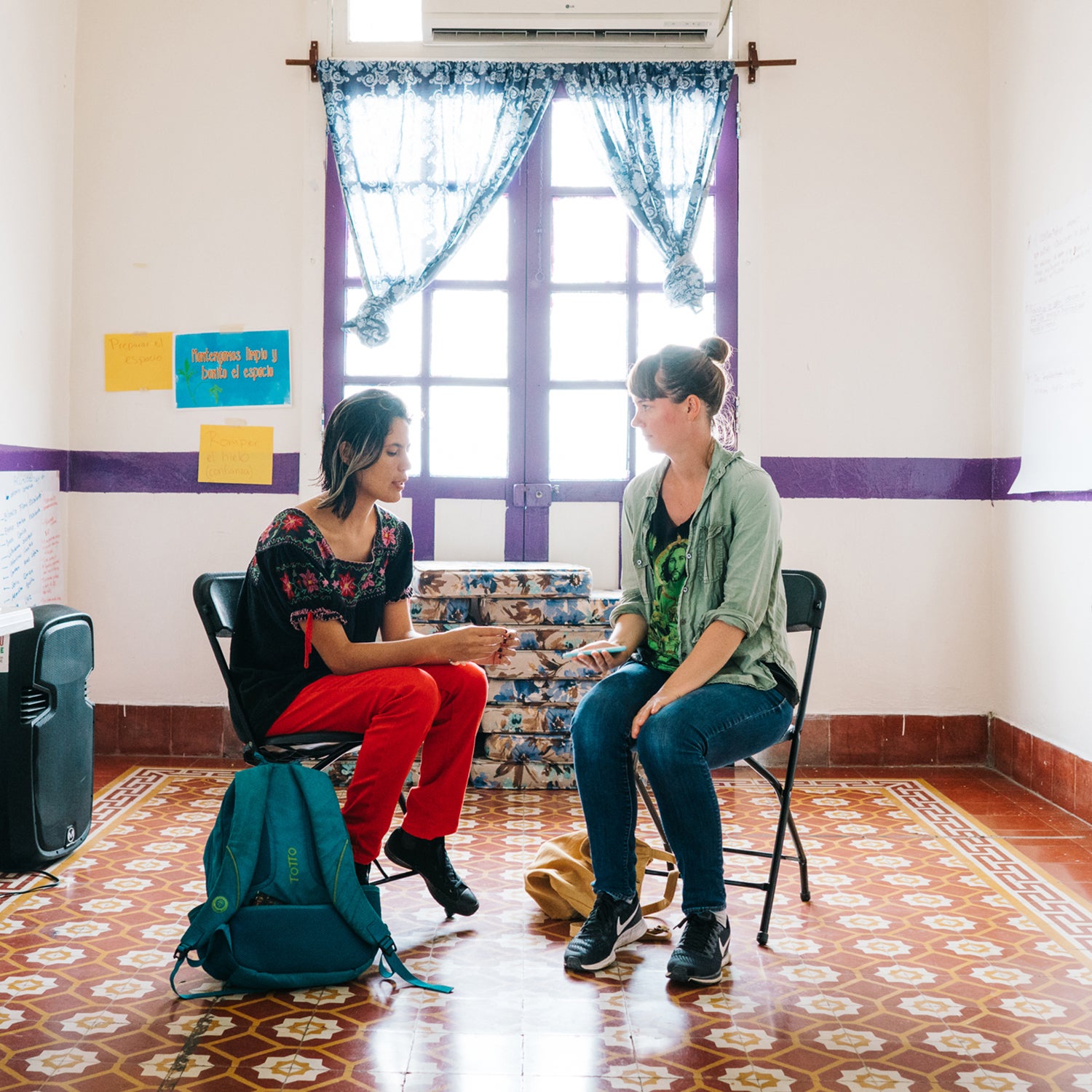Last spring, I began working on a for on migration in Mexico, Guatemala, and El Salvador. I had a photography budget, and I knew I wanted to hire women. Female writers are sorely underrepresented in my profession—in 2015, in the New Yorker went to men—and the situation is even worse for . If you care about good reporting, as I do, it’s not hard to imagine how serious and far-reaching the effects of this imbalance can be.
“Right now, women make up roughly 15 percent of the news photographers published in major western news outlets,” explains , founder of , a database to promote the work of female photographers. “That’s not just a problem of affirmative action. It’s a problem for responsible and nuanced storytelling.”
Working as a reporter in Central America for the past three years, I’ve gotten used to men asking if I’m married and offering unwanted advice about how to live my life. (“You’d better hurry up,” one cab driver in Mexico City suggested, “before you get ugly!”) The advice is almost always from men I’ve just met, who assume I’m lost and need their help. And while it’s usually framed within well-intentioned warnings about the dangers of traveling alone, the subtext has been obvious: If you’re a woman, you shouldn’t be doing this.
This was evident during my reporting in Tapachula, a town roughly 25 miles from the Mexico-Guatemala border that has experienced high levels of violence and crime. On my first day, I took a collective bus to Ciudad Hidalgo, on the Suchiate River, where migrants and locals cross the border on giant inner tubes, thus avoiding paperwork and fees. En route, a twentysomething guy sitting behind me leaned in and asked where my husband was. Then he asked, “Did you know eight men were beheaded in Ciudad Hidalgo this week?”
“If photojournalists are the lens through which the general public sees the rest of the world, we need to make sure storytellers are just as diverse as the people and issues they cover.”
It was as if, in his mind, those two questions were somehow connected. When I told him it was none of his business, he let out a howling laugh and announced his findings to the entire bus: “She is definitely not married!”
My plan was to cross the Suchiate River with migrants, and then visit a migrant shelter in Tecún Umán, Guatemala, where I could interview residents for the following five days. I traveled with photographer , and even the male migrants we interviewed at the migrant shelters on both sides of the border asked why we weren’t safely at home with our children. “We don’t have any,” we would respond in unison, which prompted more than a few people to ask if we were lesbians.
The day we conducted interviews and took photos at the Belén shelter in Tapachula, there was only one migrant woman present among dozens of men. Ludin Gómez, 31, a single mother from Santa Rosa de Copán, Honduras, was traveling with her three children: Daniella, 7, Isaac, 9, and María José, 12. “I am so glad you women are here,” she told us both. “Sometimes we think that nobody cares about migrants.”
In March, I spent two weeks living at a in Ciudad Juárez, a town on the U.S.-Mexico border that, like Tapachula, is profoundly affected by violence and human trafficking. Most of the migrants at the Juárez shelter were men traveling alone, but there were several young women with children. At the time, I worked with , a local photographer who said she was often questioned about her choice to travel alone for assignments.
“Why did you come here? Why are you alone?” an indigenous Zapotec woman asked her in Oaxaca City. “Aren’t you afraid to travel alone without a husband and with your camera?”
Some of the mothers at the shelter had been through traumatic experiences along the migrant trail. Itzel, who is a mother of two girls, soon approached them, began exchanging stories, and eventually started taking pictures. Her ease of interaction surprised even me, because I wasn’t sure whether they would allow their children to be photographed. It occurred to me that Itzel’s exceedingly powerful photographs might not have been possible if she had been a man.
“If photojournalists are the lens through which the general public sees the rest of the world,” Zalcman says, “we need to make sure storytellers are just as diverse as the people and issues they cover.”
Photographer , my partner on the migration project in El Salvador, had a similar experience in Tunisia. While on assignment shooting video, a man approached her and said he was impressed by her professionalism. He was surprised, he said, “because there are no female Tunisian photographers.”
Danielle pointed out to him that it was most likely because women are not encouraged to pursue photography as a career, adding that it was like this in the United States, where she was from. He didn’t seem won over, but I hope other people might be. I hired these women because I admired their body of work, their hustle, their drive, and their faith in the power of photography to move people and create positive social change. I want to see the world represented equally—through our voice, as well as our eyes—and I continue to have faith in the power of actions and words to change people’s perceptions about what women can do.


